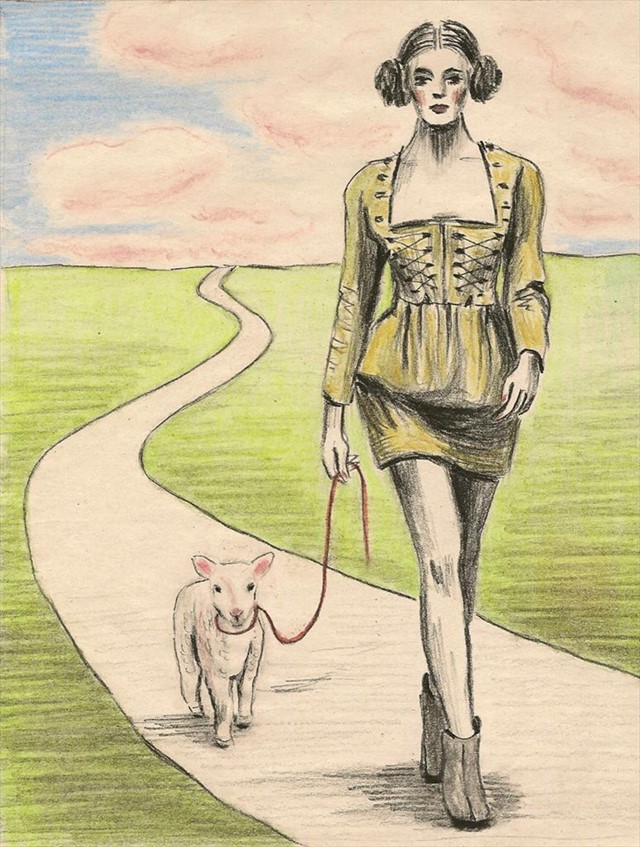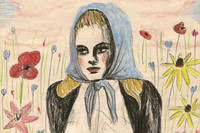Marios Schwab looked ahead to Oktoberfest with the autumn/winter collection he showed in London last month.
Marios Schwab looked ahead to Oktoberfest with the autumn/winter collection he showed in London last month. He has explored various avenues of womanhood, from sci-fi body-con to column-skirted romance, but this time his mainstay was the – literally – humble dirndl.
A full skirt with a gathered waist, often worn with a laced bodice, the dirndl is teutonic in origin – just like Schwab himself – and is traditionally peasant garb. It's a rather naïve fashion tactic, but when most of the world is in fairly dire financial straits, the aim is to look rural and innocent, not grubbied by the money-making machinations of the big city.
But the lowly dirndl has long been a signifier of political zeitgeists: the Tyrolean costume, famously fashionable during the Thirties, was an ultra feminine expression of the modern feudalism and nostalgic idyll that many hankered after – and which seemed also to pervade the autumn collections.
Schwab's dirndls, inspired by his being “the only boy in fashion college” in his native Austria, came in brocade-esque embroidered fabrics; the similarities to those made from curtains by his compatriots, the Von Trapps, can't be coincidental.
In fact, the dirndl's first foothold in Western wardrobes came in the aftermath of the Russian revolution, when emigrés flocked to continental Europe, and the Russian look caught on. Grand Duchess Maria Pavlovna – a daughter of one of Russia's most prominent aristocratic families – set up a business that employed exiled women to embroider traditional designs, and supplied fabrics to Chanel, among others.
Skirts were big again, both physically and idiomatically, in the Fifties – yet another period of domestic sentimentality, when brocade and embroidery were swapped for prints. The Fifties dirndl was subverted by Miuccia Prada for spring/summer 2000, when she decorated one with lipsticks. Modern femininity indeed.
But it was Yves Saint Laurent who gave the dirndl a permanent place in the fashion hall of fame, with his 1976 Cossack collection. Having perfected cartridge pleated skirts in wool and tweed during his tenure at Dior, he reworked the style perfectly with pastoral overtones suitable for the growing ranks of young, liberal intelligentsia.
Schwab's dirndls are more aggressively urban than Saint Laurent's, but the edict is the same: after so many seasons of sculpted, slick and overtly sexual clothes, it's time to make hay. Think of Marie Antoinette playing the milkmaid in her Petit Trianon rather than any actual sort of farm labourer though.
Harriet Walker is a fashion writer at The Independent
Zoë Taylor has appeared in Le Gun, Bare Bones, Ambit and Dazed & Confused. She is currently working on her third graphic novella and an exhibition


